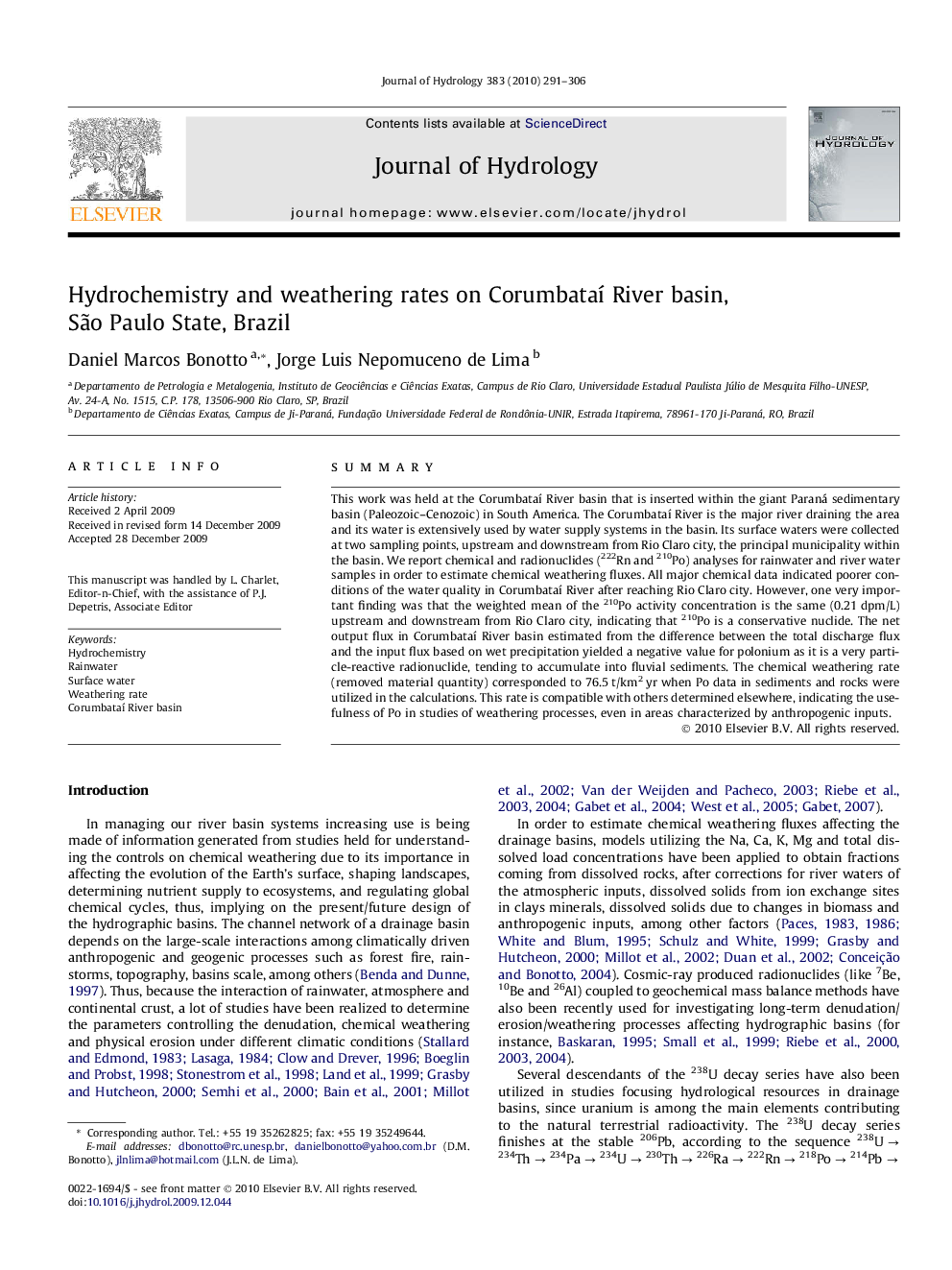| کد مقاله | کد نشریه | سال انتشار | مقاله انگلیسی | نسخه تمام متن |
|---|---|---|---|---|
| 4578476 | 1630059 | 2010 | 16 صفحه PDF | دانلود رایگان |

SummaryThis work was held at the Corumbataí River basin that is inserted within the giant Paraná sedimentary basin (Paleozoic–Cenozoic) in South America. The Corumbataí River is the major river draining the area and its water is extensively used by water supply systems in the basin. Its surface waters were collected at two sampling points, upstream and downstream from Rio Claro city, the principal municipality within the basin. We report chemical and radionuclides (222Rn and 210Po) analyses for rainwater and river water samples in order to estimate chemical weathering fluxes. All major chemical data indicated poorer conditions of the water quality in Corumbataí River after reaching Rio Claro city. However, one very important finding was that the weighted mean of the 210Po activity concentration is the same (0.21 dpm/L) upstream and downstream from Rio Claro city, indicating that 210Po is a conservative nuclide. The net output flux in Corumbataí River basin estimated from the difference between the total discharge flux and the input flux based on wet precipitation yielded a negative value for polonium as it is a very particle-reactive radionuclide, tending to accumulate into fluvial sediments. The chemical weathering rate (removed material quantity) corresponded to 76.5 t/km2 yr when Po data in sediments and rocks were utilized in the calculations. This rate is compatible with others determined elsewhere, indicating the usefulness of Po in studies of weathering processes, even in areas characterized by anthropogenic inputs.
Journal: Journal of Hydrology - Volume 383, Issues 3–4, 30 March 2010, Pages 291–306